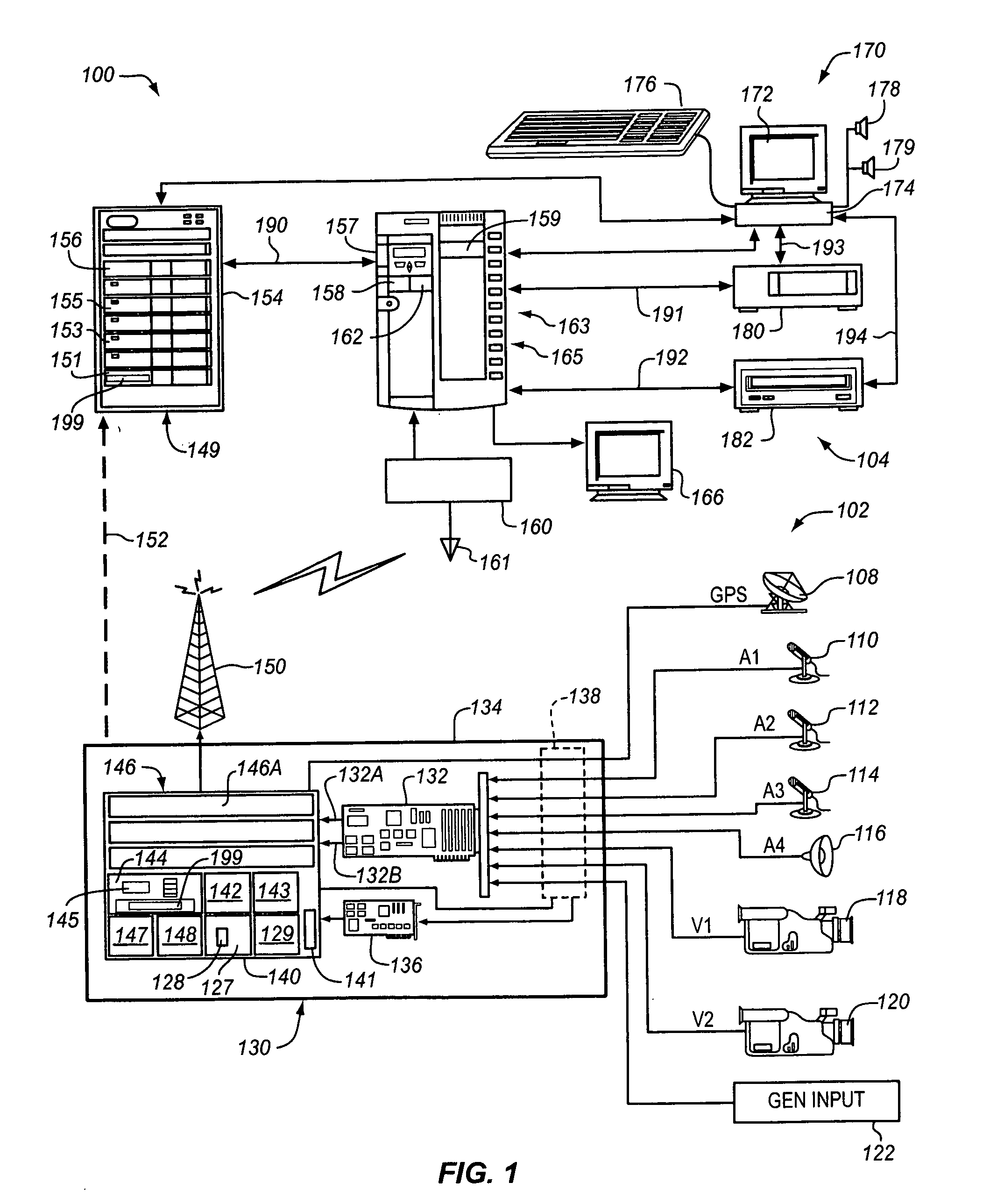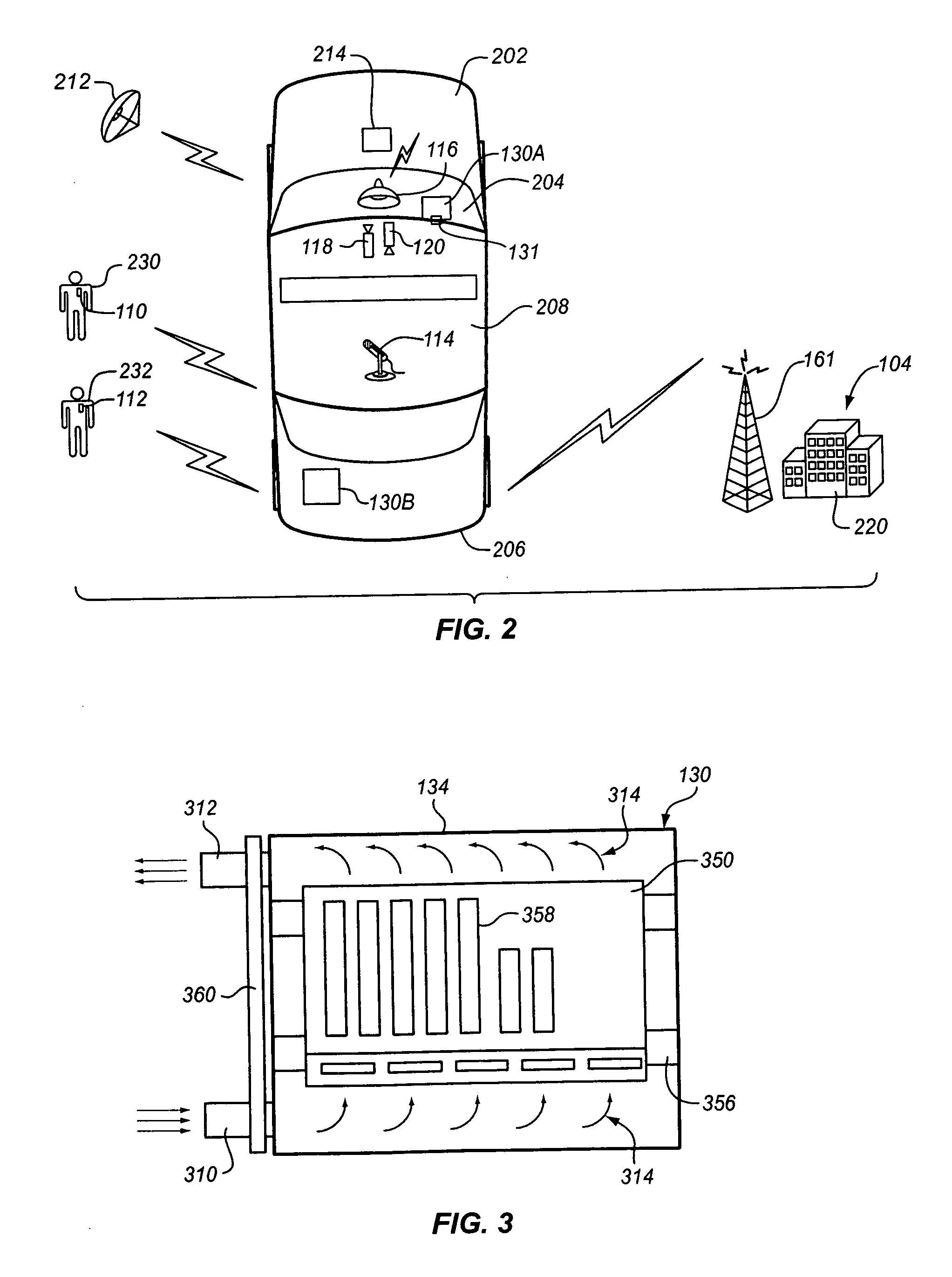Robust surveillance system with partitioned media
- Summary
- Abstract
- Description
- Claims
- Application Information
AI Technical Summary
Benefits of technology
Problems solved by technology
Method used
Image
Examples
Embodiment Construction
[0034]FIG. 1 is a block diagram view of a preferred embodiment of a surveillance system 100 according to the invention. Surveillance system 100 includes a patrol unit 102 and a command center unit 104. In one aspect of the invention, high resolution video data for an entire patrol car shift is recorded on a tape 199 in recorder 144, and, at the end of the shift, the tape 199 is removed by the patrol officer and transferred, as indicated by arrow 152, to a master sled bay 154 in the command unit 104. In this specification we shall at times refer to video / audio, audio / visual, or simple video for short, all of which mean the same thing unless otherwise clear from the context. That is, “video” is intended to include both visual and audio data. Once in the sled bay 154, the data maybe smoothly retrieved by buffering it temporarily in hard drives 158, monitored on monitor 172, stored on a tape via recorder 180, or archived on a DVD or CD via a DVDR or CDR recorder 182. In another aspect o...
PUM
 Login to View More
Login to View More Abstract
Description
Claims
Application Information
 Login to View More
Login to View More - R&D
- Intellectual Property
- Life Sciences
- Materials
- Tech Scout
- Unparalleled Data Quality
- Higher Quality Content
- 60% Fewer Hallucinations
Browse by: Latest US Patents, China's latest patents, Technical Efficacy Thesaurus, Application Domain, Technology Topic, Popular Technical Reports.
© 2025 PatSnap. All rights reserved.Legal|Privacy policy|Modern Slavery Act Transparency Statement|Sitemap|About US| Contact US: help@patsnap.com



